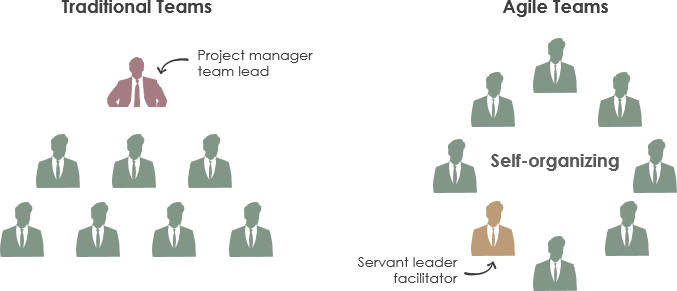Scrum Teams are self-organizing and cross-functional.
Self-organizing teams choose how best to accomplish their work, rather than being directed by others outside the team.
Cross-functional teams have all competencies needed to accomplish the work without depending on others not part of the team.

In the new scrum guide update, one of the key change has been made from the phrase that teams must “self-organized” to the phrase that they must now “self-managed”.
Self-Organizing vs Self-Managing
In a self-organizing team, the members own the “how” to do the work and decides “who” to do the work within the team. You will often find self-organizing concepts applied to agile environments, where the product owner owns the priorities of the work (i.e., the “what”) and the team owns the “how” and “who.”
In a self-managed team, members have autonomy over how, who, and what to do. The “what” refers to employees prioritizing work activities. In each case, there is a task level of the organization’s “what” and “why” defined by the company leader, both of which must be consistent.
In other words, the Scrum team self-manage the internal decisions of who does what, when, and how
Hence
- Self-organizing teams = decide: how to accomplish?
- Self-managing teams = decide: how, when, and what to accomplish?
The changes to Scrum in 2020 will help organize teams and enable them to manage their own work. Organizational success lies in cutting red tape and clear boundaries.
This post is also available in Deutsch, Español, فارسی, Français, Bahasa Indonesia, 日本語, Polski, Portuguese, Ру́сский, Việt Nam, 简体中文 and 繁體中文.













